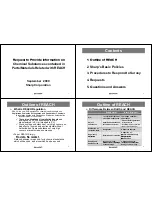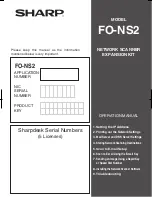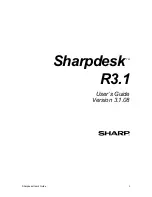
VMware, Inc.
2
Extending Virtual Machine Deletion with Scripts
The
next
example
shows
how
you
could
extract
the
name
of
the
virtual
machine,
and
use
this
value
to
delete
the
corresponding
entry
from
Active
Directory.
Dim shell
set shell = WScript.CreateObject( "WScript.Shell" )
set vmName = shell.ExpandEnvironmentStrings("%VDM_DeleteVm_VmName%")
set machineObj = GetObject("LDAP://CN=" & vmName & ",CN=Desktops,DC=MYDOMAIN,DC=COM")
machineObj.DeleteObject(0)
This
example
assumes
that
the
script
runs
with
the
administrative
rights
to
update
entries
in
Active
Directory.
You
must
modify
the
script
to
correspond
to
the
configuration
of
your
local
systems
in
Active
Directory.
Add a Windows Registry Entry for a Deletion Script
To
make
a
deletion
script
available
for
execution,
you
must
add
it
to
the
Windows
registry.
You
must
create
an
entry
on
each
View
Connection
Server
instance
where
you
want
View
Manager
to
run
the
deletion
script
when
you
delete
a
virtual
machine.
To add an entry for a deletion script to the registry on a View Connection Server instance
1
Start
the
Windows
Registry
Editor
by
entering
regedit
at
the
command
prompt.
2
In
the
registry,
navigate
to
HKLM\SOFTWARE\VMware, Inc.\VMware VDM\ScriptEvents
.
3
In
the
navigation
area,
right
‐
click
ScriptEvents
,
select
New
>
Key
,
and
create
a
key
named
DeleteVm.
4
In
the
navigation
area,
right
‐
click
DeleteVm
,
select
New
>
String
Value
,
and
create
a
string
value
that
identifies
the
deletion
script
to
be
run.
To
run
more
than
one
deletion
script,
create
a
string
value
entry
for
each
script
under
the
DeleteVm
key.
You
cannot
specify
the
order
in
which
these
scripts
run.
If
the
scripts
must
run
in
a
specified
order,
invoke
them
from
a
single
control
script.
5
In
the
topic
area,
right
‐
click
on
the
entry
for
the
new
string
value,
and
select
Modify
.
6
In
Value
data
,
enter
the
command
line
that
invokes
the
deletion
script,
and
click
OK
.
Specify
the
full
path
of
the
deletion
script
and
any
files
that
it
requires.
7
If
you
want
the
VMware
View
Script
Host
service
to
time
out
the
deletion
script,
right
click
on
the
Default
key,
select
Modify
,
enter
the
timeout
value
in
milliseconds,
and
click
OK
.
8
Exit
the
Registry
Editor,
and
restart
the
system.
Configure the VMware View Script Host Service
You
must
configure
the
VMware
View
Script
Host
service
on
each
View
Connection
Server
instance
where
you
want
View
Manager
to
run
the
deletion
script.
By
default,
the
VMware
View
Script
Host
service
is
disabled.
To configure the VMware View Script Host service
1
Start
the
Windows
Services
tool
by
entering
services.msc
at
the
command
prompt.
2
In
the
details
pane,
right
‐
click
on
the
VMware
View
Script
Host
service
entry,
and
select
Properties
.
3
On
the
General
tab,
in
Startup
type
,
select
Automatic
.
4
If
you
do
not
want
the
local
system
account
to
run
the
deletion
script,
select
This
account
,
and
enter
the
details
of
the
account
to
run
the
deletion
script.
5
Click
OK
,
and
exit
the
Services
tool.
C
AUTION
Running
a
deletion
script
under
the
local
system
account
could
compromise
the
security
of
the
View
Connection
Server
host.
If
you
configure
an
account
other
than
the
local
system
account
to
run
a
deletion
script,
verify
that
the
account
has
read
permission
on
the
registry
key
for
the
script.
You
should
also
limit
the
administrative
rights
of
a
deletion
script
to
those
rights
that
allow
it
to
perform
its
function.





















